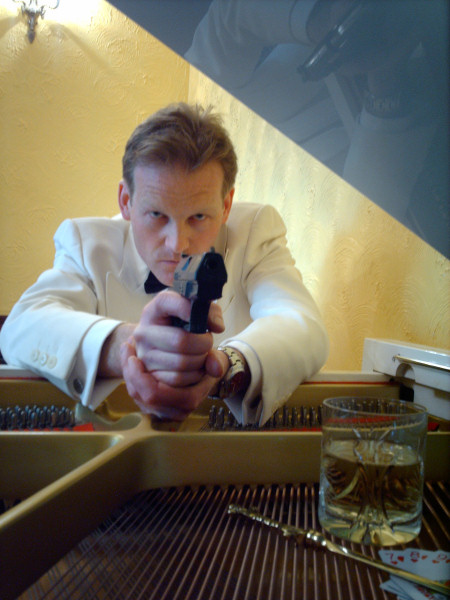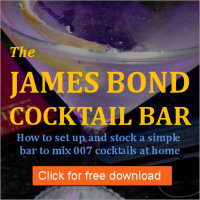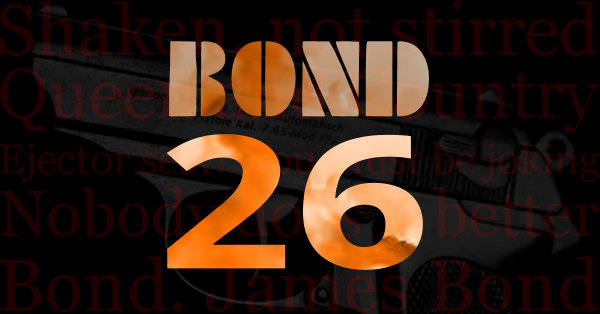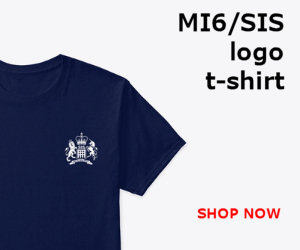In the second part of his tribute to John Barry, Bond fan and professional musician Tim Mottershead takes an in depth look at Barry’s work for On Her Majesty’s Secret Service.

With Connery having filmed the first novel in the so-called Blofeld trilogy Thunderball, in 1965, the logical next step would have been to film the second book On Her Majesty’s Secret Service, but two contemporaneous events conspired against this. Firstly, Connery announced the next Bond film would be his last; and secondly, a rival film company was planning to make Casino Royale.
The producers therefore decided they couldn’t risk such a sombre swan song for Connery and substituted You Only Live Twice instead. Unfortunately this constitutes the third part of the trilogy and makes no sense filmed out of sequence.
Necessarily then, though regrettable given that this is one of Fleming’s finest creations, the film version jettisons virtually every aspect of the novel save the title and the location, Japan, in favour of a ripping yarn by Roald Dahl: a formula to be repeated when the same production team turned Fleming’s only children’s book Chitty Chitty Bang Bang into a musical film the following year.
Be that as it may with Connery apparently gone for good the producers decided they now would film On Her Majesty’s Secret Service and a hunt of Scarlet O Hara proportions was on for the new Bond.
Many actors were considered for the role, including Roger Moore (unavailable, as mentioned earlier), and Timothy Dalton, who aged 24, discounted himself as being too young for the role (observing that Bond is: a Commander…a mature man in his mid-30s).
Even Oliver Reed was considered, perhaps not so surprising in his slim, good looking younger days, but even then the producers were very worried by his hell-raising image. Over 400 actors were screen tested for the role, and the part eventually fell to unknown Australian George Lazenby.
Although the lyricist Barry had previously collaborated with on previous Bond films, Leslie Bricusse, apparently produced possible words for a song, the decision was taken early on to use an instrumental piece in place of a title song (the only film to do this apart from Dr. No).
The main theme of the film is essentially a march (it is heard in march form proper later on, when Bond composes his resignation letter) in which it is not too fanciful to suggest that Barry manages to convey both the heroic and the noble, qualities associated with Bond himself, and the sense of his service to his country.
There is also a sense of the epic in the middle section (which doesn’t go amiss in the subsequent alpine scenes) and a remorseless driving rhythm and bass line throughout (the content being more important than the novel early use of the Moog synthesizer) which at face value creates excitement, and at a deeper level perhaps symbolises Bond’s relentless pursuit of Blofeld (‘Operation Bedlam’).
Barry stated that as Lazenby was hardly a Laurence Olivier he painted the music in big gestures. This is nowhere more apparent than in the opening 6 chord introductory sequence (played twice). The fact this is so satisfying, can perhaps be partially explained by the fact it has already been heard (in vastly slowed down form) in the pre-titles sequence, where Bond spies a girl abandon her car on the beach and walk towards the sea, as an introduction to sweeping romantic strings.
After rescuing Teresa (Tracy) from drowning in the sea Bond is confronted by two henchmen, whom he then fights off to the accompaniment of some exciting up-tempo music. Having dispatched the villains Bond then discovers that in the meanwhile Tracy has departed in his own car, and a in a Cinderella-like moment, has left her shoes behind.
A perplexed George Lazenby then utters the line “this never happened to the other feller”, at which point the titles roll. After the titles, in an early scene in the film, in lieu of a title song, we are treated to Louis Armstrong (in his last recording) singing We Have All The Time In The World as a touching accompaniment to Bond and Tracy’s courtship and growing love. However, perhaps the finest example of Barry’s work is to be found in the scene that immediately follows this song.
Before I describe this, I’ll first mention some of the general pitfalls associated with writing a film score. The first is a technique known as leitmotif (as used by Wagner in his operas) where a particular musical theme is associated with a particular character.
Though a there are quite a few advantages to this (a strong association can be exploited to show a second character is thinking about an absent first character for example), there are quite a few disadvantages too. For example, if a character enters the stage/screen to a set musical sound, isn’t the aural depiction merely repetitious of what we have apprehended visually?
In this respect it’s probably fair to say that over the course of the film franchise, the James Bond theme was literally overplayed, and David Arnold’s decision in more recent films to reduce its appearances, especially since the advent of Daniel Craig has surely been both wise and correct.
Another real problem for the film composer is that the music can become bitty, acting as a glorified sound effect. One solution, which Barry uses time and again in the Bond series to provide a structure, is to employ a kind of variation form, in which a short idea is repeated throughout a scene (technically speaking this might be variously described as a ostinato, chaconne, passacaglia etc.) over which various layers are superimposed.
In On Her Majesty’s Secret Service Bond learns through Tracy’s father, Marc Ange Draco, head of the Corsican Mafia, that Blofeld is in contact with Bern solicitor Gumbold.
Strictly speaking on leave at this point, Bond realises that in order to track down the elusive Blofeld he must crack Gumbold’s safe, which he arranges to do during the solicitor’s lunch hour. So as Bond says adieu to Tracy and Draco and departs their chauffeur driven Rolls, we are immediately led into the scene “Gumbold’s safe” – download my notes in the accompanying document.
The music for this scene is in slow 4 time, the piece being almost exclusively built from a 2 bar (i.e. 8 beat) unit (effectively the main theme). This building block (hereafter called theme A) consists of 8 relatively quick notes followed by a long sustained note (2 beats), then 5 relatively quick notes followed by a long sustained note (3 beats). With its inherent start/stop, or activity/repose, this in itself provides an underlying atmosphere of suspense.
Each section of the piece as itemised as itemised in the download consists of a certain number of repetitions of theme A. As the piece develops, the main material of each section is carried forward (unless indicated that something is replaced by something else), so that the new parts are superimposed over. Thus the music accumulates more layers as is progresses. Only at the very end of the piece is theme A replaced by the closing theme B (a 1 bar 4 beat unit).
Thus in a scene which, though crucial, has minimal dialogue or dramatic action, John Barry manages to convey both a palpable sense of nervous tension (as if one were actually present in the office with Bond) and a real sense of the passage of time.
Tim Mottershead is a professional pianist, composer, and writer on music, regularly contributing to a number of scholarly journals. As a pianist his repertoire ranges from specialist concerts devoted to individual composers, to lighter programmes, and themed recitals; one of which is a James Bond concert For Your Ears Only.
Buxton Fringe review 2008: “The tunes clearly create great demands on the pianist as he attempts to do justice not just to the tune but also to the arrangements…Tim Mottershead is to be commended for his arrangements and technical skill in bringing these themes to the piano…Between songs he provided a well researched and often droll commentary on each film and/or book and often the differences between them… Goldfinger and Diamonds Are Forever sounded terrific on solo piano…[whilst] Madonna’s Die Another Day, was turned into something of an avant garde masterpiece at the hands of Mr Mottershead.”










